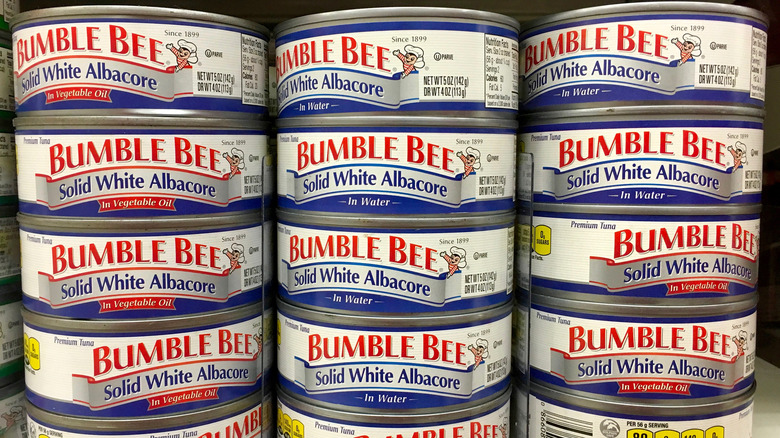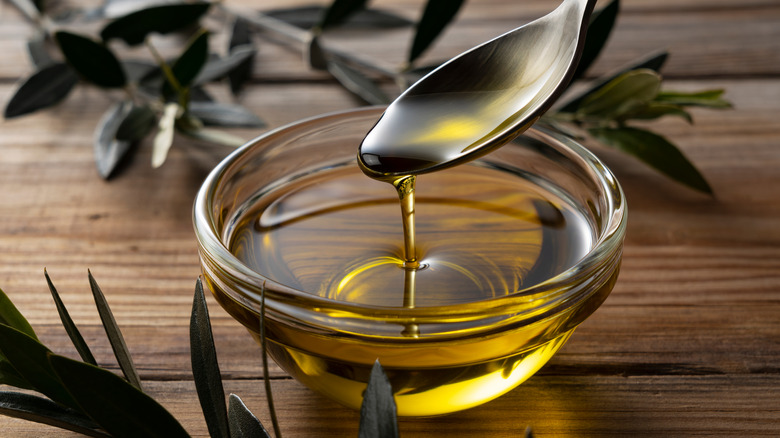The Simple Method To Convert Water-Packed Tuna To Oil-Packed
No one really talks about it, but a trip to the supermarket tuna aisle can feel downright overwhelming. Even after you've decoded the difference between solid and chunk and white versus light and sorted through the array of possible combinations, there's still the question of whether to go with the oil-packed or the water-packed.
For starters, the two offer thought-provoking nutritional differences. Among others, oil-packed tuna has a higher fat-to-protein ratio than water-packed. But even if that's not a major decision point for you, there are still various differences that contribute to a different epicurean experience. Water-packed tuna boasts a firmer, drier texture and milder flavor than oil-packed. That's why it works well in dishes that borrow richness from other ingredients, like mayonnaise-based tuna salad, or this recipe for Dilly Tuna Casserole, which makes genius use of a can of condensed cream of celery soup.
On the other hand, oil-packed tuna also works well for these same purposes, particularly if you drain the oil first. In fact, oil-packed tuna may work even better because it's more flavorful, while, at the same time, less fishy-tasting than water-packed. Plus, its tender, moist, and flaky bite feels closer to that of fresh fish. Not for nothing, oil-packed is our tuna of choice for doctoring up seafood linguine.
But if you didn't opt for the oil-packed on your last supermarket run, there's still hope! We're about to tell you the simple method to turn water-packed tuna into oil-packed.
It's kinda like making tuna confit, only so much easier
Tuna confit is fresh tuna that's been cooked and preserved in oil. Our simple method for converting water-packed tuna into oil-packed involves no cooking, however, because canned tuna comes pre-cooked. All you need to do is open the can, drain off the water, empty the tuna into a bowl, flake it a bit with a fork and add a generous splash of extra virgin olive oil. Simply Recipes suggests using two to three tablespoons of oil, but we encourage you to improvise.
Once made, you can use your oil-enhanced tuna immediately. In the alternative, you can cover and refrigerate it for up to a week — which is about how long tuna confit lasts in the fridge. Either way, this simple process turns your water-packed tuna into a reasonable approximation of the richly textured, dense but moist, umami flavor bomb that is canned oil-packed tuna.
You can enjoy your homemade oil-enhanced tuna straight up or on salad. But you can also use it in any recipe that calls for oil-packed canned tuna. For best results, however, you'll want to use the oil right along with the tuna — as opposed to draining the oil off. The reason is that the tuna infuses the oil with flavor, and we're pretty sure you're going to want to leverage every last drop of that flavor.

